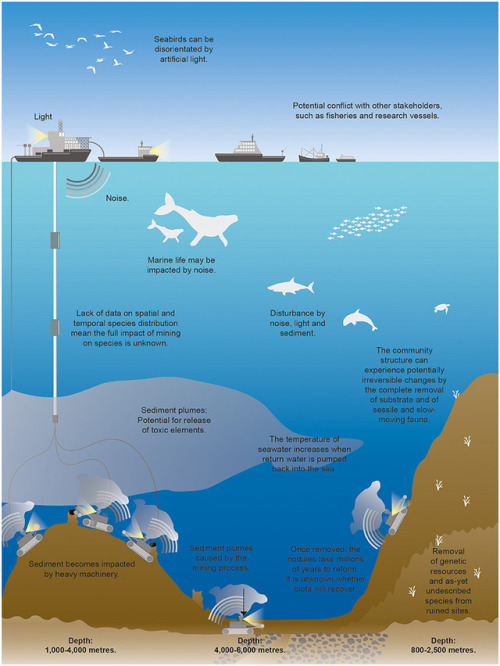#marine environment
DEEP-SEA MINING COULD DESTROY MARINE ECOSYSTEMS
Despite deep-sea environments covers about half of the Earth’s surface and is home to a vast range of species, little is known about these environments, and mining could have long-lasting and unforeseen consequences, not just at mining sites but also across much larger areas.
According to a study published in scientific journal Frontiers in Marine Science, which is the first to give a global overview of all current plans to mine the seabed, in both national and international waters, and looks at the potential impacts including physical destruction of seabed habitats, creation of large underwater plumes of sediment and the effects of chemical, noise and light pollution arising from mining operations.
Rising demand for minerals and metals, including for use in the technology sector, has led to a resurgence of interest in exploration of mineral resources located on the seabed. Such resources, whether seafloor massive sulfides around hydrothermal vents, cobalt-rich crusts on the flanks of seamounts or fields of manganese nodules on the abyssal plains, cannot be considered in isolation of the distinctive, in some cases unique, assemblages of marine species associated with the same habitats and structures.
Some operations are already taking place, generally at relatively shallow depths near national coastlines. The first commercial enterprise, expected to target mineral-rich sulfides in deeper waters, at depths between 1,500 and 2,000 m on the continental shelf of Papua New Guinea, is scheduled to begin early in 2019.
- Illustration: A schematic showing the potential impacts of deep-sea mining on marine ecosystems. Schematic not to scale.
- Reference: Milleret al., 2018. An Overview of Seabed Mining Including the Current State of Development, Environmental Impacts, and Knowledge Gaps. Frontiers in Marine Science.
Post link


